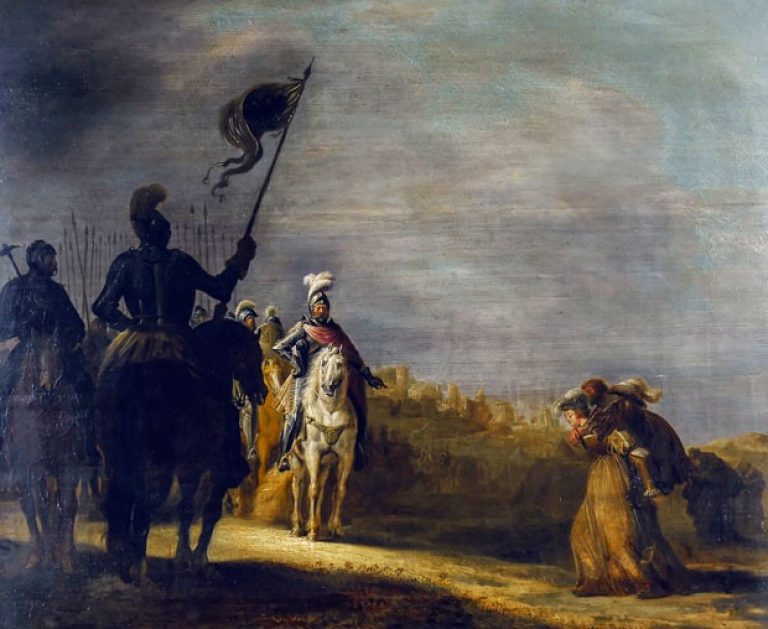Nazi-looted painting 'Women of Weinsberg' is returned to Max Stern heirs

In the presence of officials from the World Jewish Congress, Uwe Grobshäuser, deputy mayor of the City of Weinsberg, returned the Dutch Golden Age painting “Women of Weinsberg” by Gerrit Claesz Bleker (1592-1656) to representatives of the Max and Iris Stern Foundation and its three university beneficiaries — Concordia University and McGill University in Montreal and Hebrew University, Jerusalem.
It is the 17th painting recovered by the Foundation.
In 2014, research by the Max Stern Art Restitution Project team identified records and key references to the German-Jewish art dealer’s ownership of the painting in the archives of the Netherlands Institute for Art History.
Soon after, the Holocaust Claims Processing Office of the New York State Department of Financial Services, acting on behalf of the Foundation, submitted a claim to the City of Weinsberg which had been displaying the work since 1968.
The painting holds considerable meaning for this medieval Bavarian enclave. In the 12th century, during the time of the Holy Roman Empire, Castle Weinsberg was attacked by King Conrad III.
The wives of the besieged castle negotiated a surrender granting them permission to leave with whatever they could take on their shoulders. Setting aside all material possessions, these women carried out their husbands. The king laughed and accepted the clever manoeuvre.
Given the importance to its civic history, the Stern Foundation agreed with Weinsberg retaining the treasured work. This international arrangement involved the Office for Provenance Research of the German Lost Art Foundation and the Cultural Foundation of German Federal States.
“Our city is thankful that with the active support of foundations and donors, we were able to acquire the painting from the Stern Foundation, after its restitution,” says Stefan Thoma, mayor of Weinsberg. “Thus, this significant work can remain in the Weibertreu Museum, where it has been displayed for the last 30 years.”
“The restitution of this painting is testament to the fact that through the dedicated efforts of individuals and organizations, a small measure of justice can be brought to this dark period of history,” says Stéphane Dion, Canadian Ambassador and Special Envoy to the European Union and Europe.
“I congratulate everyone involved and strongly hope that the Max Stern Art Restitution Project will continue to receive all possible support in Germany.”
The Stern Foundation is grateful to the offices of Neumeister auction house for hosting the return ceremony. When the restitution agreement was finalized this past fall, the intended venue for the ceremony was the Dusseldorf Stadtmuseum — to coincide with the opening of a travelling exhibition on Max Stern’s life and work.
With the surprising cancellation of the show by the City of Dusseldorf, due to their stated concerns about Stern restitution claims in Germany, the ceremony was moved to Munich.
“We are hopeful that the Weinsberg return and exemplary efforts of various state and national partners will compel other German municipalities, museums and collectors to openly address restitution matters,” notes Clarence Epstein, head of the Max Stern Art Restitution Project.
Max Stern (1904-1987) was the Jewish owner of an important art gallery in Dusseldorf. With the rise of Nazism and his expulsion from the Reich Chamber of Fine Arts in 1935 due to his religion, the inventory of Galerie Stern and his personal collection was sold by force and the remnants consigned to auction two years later.
Download a high-resolution version of “Woman of Weinsberg” by Gerrit Claesz Bleker.




